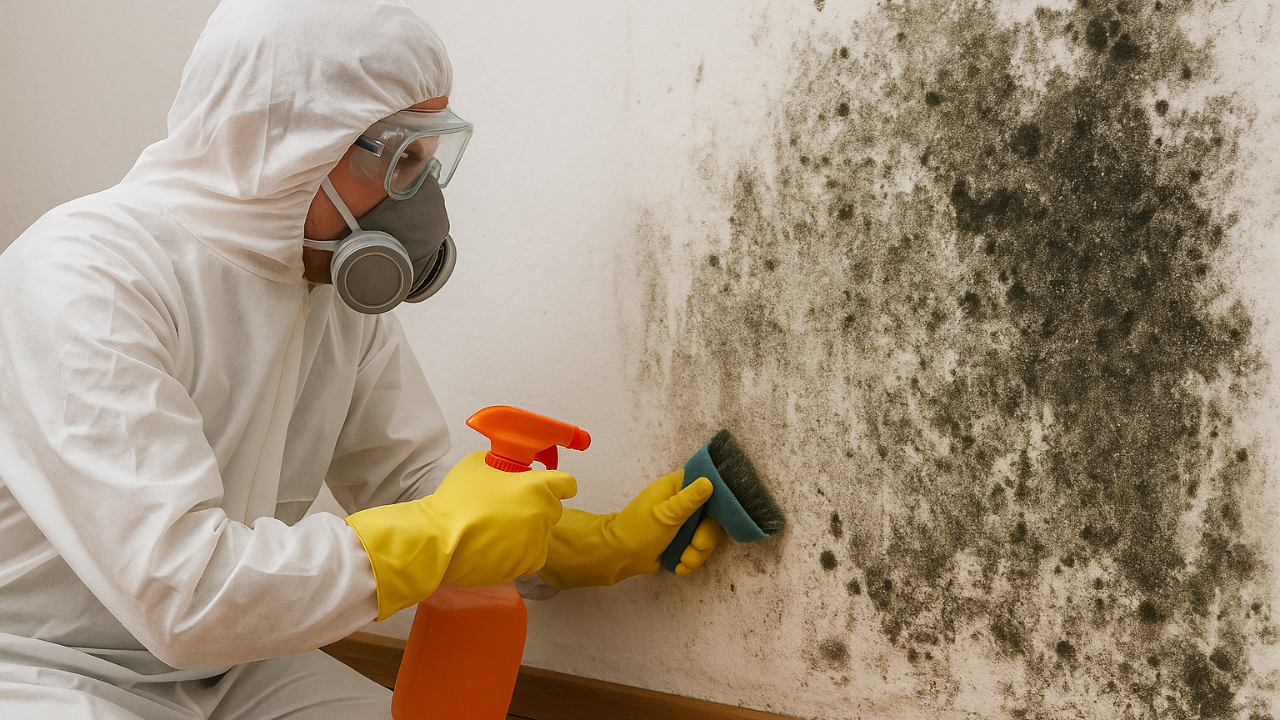Dustless Demolition, a certified mold remediation and demolition company based in Kelowna, British Columbia, announces the results of a climate-related increase in mold contamination in homes and properties in the Okanagan Valley. The report draws on climate data from Environment and Climate Change Canada, local observations and external studies to highlight a growing public health problem directly related to severe weather and rapidly changing indoor environments.
Recent data suggests British Columbia experienced one of the warmest summers on record in 2025, with heat waves two to 10 times more likely as a result of human-caused climate change, according to Environment and Climate Change Canada. The Okanagan Valley will experience an average annual temperature increase of 2.1°C to 4.4°C by 2050, accompanied by an increase in days with temperatures above 30°C and more frequent, heavy rainfall. These factors combine to accelerate the moisture cycle in homes, affecting both older and newer buildings.

The importance of these climate trends lies in their connection to recurring mold problems. Mold spores thrive in moist, warm environments and can begin to colonize building materials such as drywall, wood, and insulation within 24 to 48 hours of water intrusion. The BC Center for Disease Control notes that climate-related changes in humidity and precipitation are linked to “poor indoor air quality due to mold growth,” with a significant increase in respiratory illnesses among children, seniors and immunocompromised populations. Regionally, the Okanagan has also faced multiple Stage 4 droughts in recent years, followed by abrupt switches to heavy rainfall, resulting in rapid moisture intrusion and repeated cycles of drying and wetness. This fluctuation led to more frequent mold infestations and higher property insurance claims.
Dustless Demolition employs remediation procedures that meet IICRC certification standards and meet EPA, OSHA and WorkSafe BC guidelines to ensure both safe mold removal and environmental compliance. The company's technicians report an increase in calls related to climate-related causes, including moisture buildup behind walls and in crawl spaces, moisture in attic insulation and condensation in the air conditioning system. According to the U.S. Environmental Protection Agency, more than half of homes affected by water damage face persistent mold exposure.
The observations presented by Dustless Demolition are supported by broad public health research. Studies cited by the National Institute of Environmental Health Sciences and the Centers for Disease Control and Prevention show that mold exposure can trigger asthma attacks, allergic reactions, sinus congestion, coughing and, in severe cases, fungal lung infections. Long-term exposure in children has been associated with an increased risk of asthma and, less commonly, neurological symptoms. Although mold can produce mycotoxins, most domestic exposures do not reach toxic levels. However, health risks are increased when vulnerable groups live in damp or inadequately ventilated homes.
Research also shows that no home is immune to the risk of mold. Homes built before 1978 across inland Canada have higher levels of mold due to aging infrastructure, leaky pipes, outdated insulation and poor ventilation. The American Healthy Homes Survey found that these older homes had significantly higher mold index values than newer homes. However, newer homes are not immune. Airtight, energy-efficient designs can trap moisture indoors, and modern cellulose-rich materials like drywall provide ideal conditions for mold to spread when exposed to leaks or condensation. National studies, including those cited by SunTrust Restoration, show that up to 30 percent of new and renovated homes experience mold growth in the first year, often due to inadequate ventilation during construction and subsequent moisture retention.
Kelowna mold and asbestos remediation experts have found that property owners and managers should not assume that mold only affects aging buildings. Climate volatility now impacts new builds and renovations just as often as old buildings, with moisture intrusion and rapid weather changes being the main causes. The company believes that early intervention, including professional moisture detection and proactive remediation, remains critical to limiting health and property damage from mold exposure.
In accordance with the latest scientific recommendations, Dustless Demolition encourages property owners to monitor humidity levels, ensure proper home ventilation, promptly clean up water damage, and consult professionals if mold is suspected in hidden areas or severe contamination occurs. The company will continue to report on climate-related hazards to properties and encourages residents to adhere to evolving public health guidance and best environmental practices.
Note: The information provided here is for general educational purposes and does not constitute medical advice. Individuals experiencing health symptoms or concerns related to mold exposure should consult a qualified healthcare provider. For additional health resources, see official guidance from the Centers for Disease Control and Prevention and the World Health Organization.
For more information about climate-related mold risks and Dustless Demolition's certified remediation services, visit the company's website.
###
For more information about Dustless Demolition Ltd contact the company here:
Dustless Demolition Ltd
Boehm
250-215-8070
dustlessdemo@outlook.com
1457 Ponderosa Rd, West Kelowna, BC V1Z 1M9